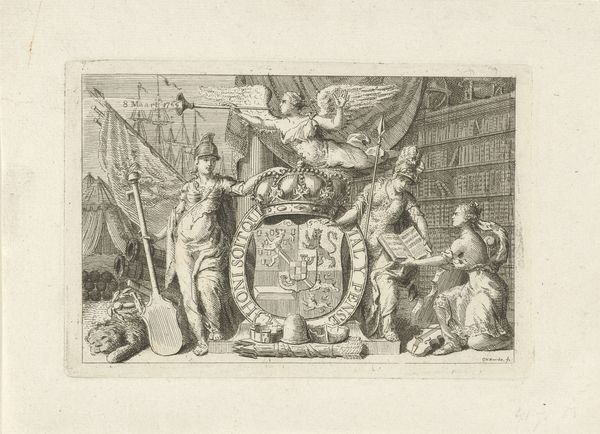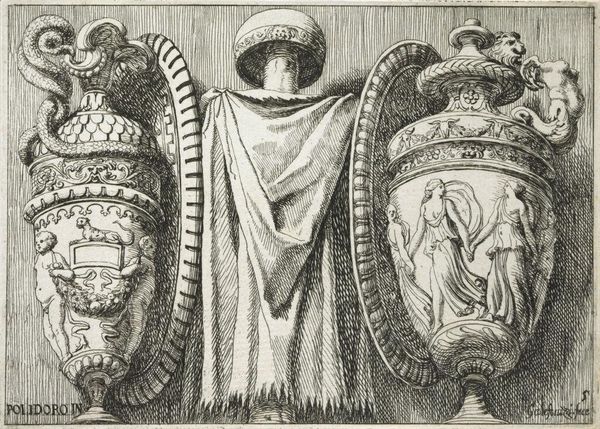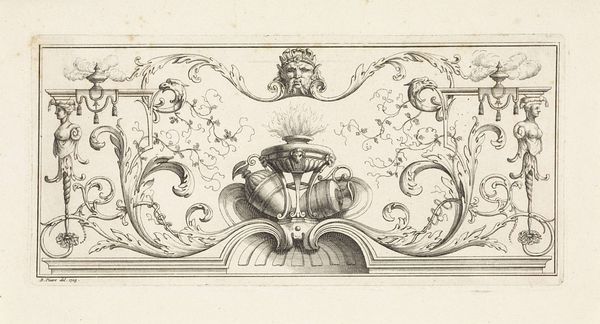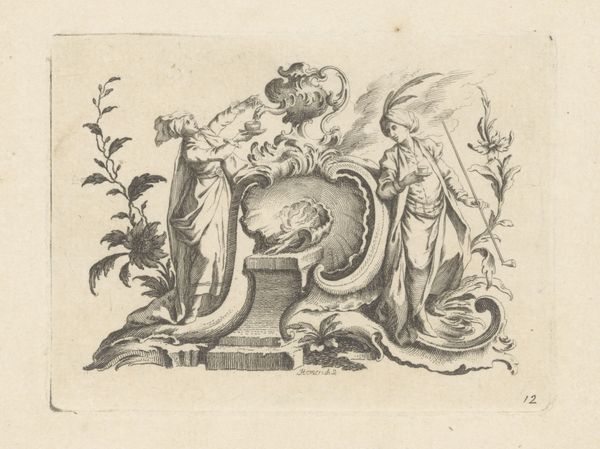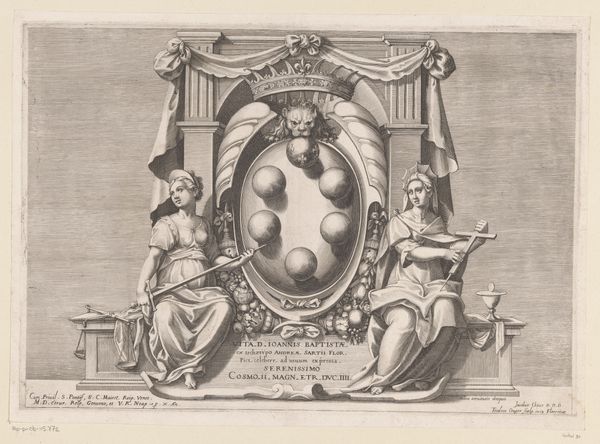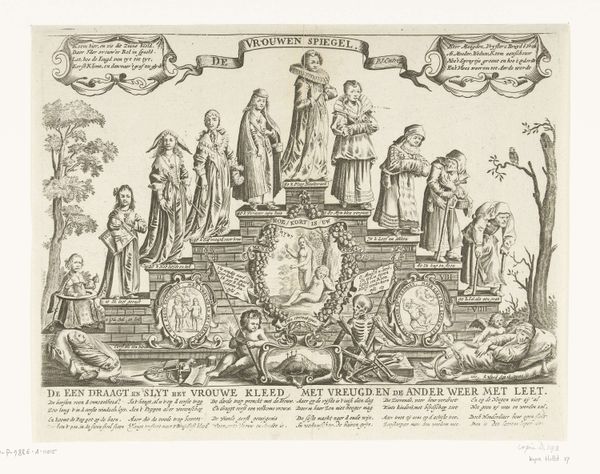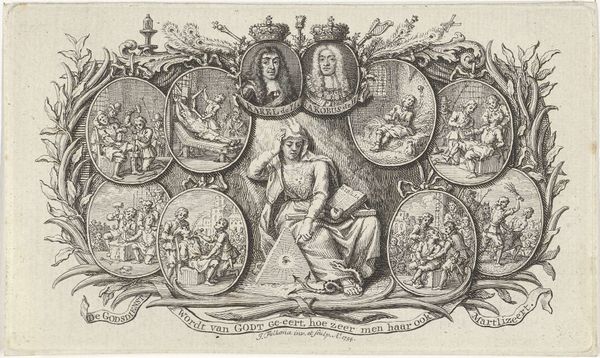
drawing, print, engraving
#
drawing
#
light pencil work
#
baroque
# print
#
pen illustration
#
pen sketch
#
pencil sketch
#
personal sketchbook
#
ink drawing experimentation
#
geometric
#
pen-ink sketch
#
pen work
#
sketchbook drawing
#
history-painting
#
sketchbook art
#
engraving
Dimensions: height 118 mm, width 164 mm
Copyright: Rijks Museum: Open Domain
Curator: This print by Giovanni Battista Galestruzzi, dating back to 1660, is titled "Boomstronk met een tuniek tussen twee kannen" or “Tree trunk with a tunic between two jugs.” The title alone already offers an interesting juxtaposition, don't you think? Editor: It certainly does. My first impression is that it’s remarkably detailed. The engravings display an intricate visual interplay of textures, a rather unusual combination of the organic tree trunk and those elaborately adorned vases. Curator: Indeed. Galestruzzi made this engraving after a design by Polidoro da Caravaggio. Polidoro was known for his innovative use of classical motifs. In that respect, we can see this work as evidence of Baroque artists looking back to antiquity for inspiration, reimagining it, and then disseminating that style more widely. The print form is of course essential for this diffusion to occur. Editor: I'm drawn to how the figures and foliage crawl all over the urns. Semiotically speaking, there’s almost an overwhelming density to the application of line here; the ornamentation on those urns could perhaps be understood as standing in for nature itself, given its overwhelming character. Curator: Yes, and note the very overt references to antiquity that might be meant to evoke prestige. Jugs like these would’ve likely been emblems of wealth and cultivated taste. What seems even more pertinent is how printmakers began circulating these designs so artisans could have examples. That makes these not just luxury items but commodities with social power. Editor: I find the tunic-clad tree trunk, as you mentioned earlier, really visually intriguing and enigmatic. It almost acts as an allegorical bridge between natural form and the constructed artifice represented by those urns. A strange harmony arises. Curator: Yes! I find it endlessly fascinating how objects like these operate not just aesthetically, but as cultural and historical markers. They can be powerful status symbols or objects of political rhetoric, reshaped, repurposed and circulated over and over. Editor: It's a beautiful illustration of that moment when nature and artifice blur, isn't it? A great display of how careful formal study and broader contextualization complement each other. Curator: Exactly. Considering its historical context deepens our appreciation for its aesthetic choices, and the dialogue that emerges between these interpretive modes illuminates much about the art and its long afterlife.
Comments
No comments
Be the first to comment and join the conversation on the ultimate creative platform.


